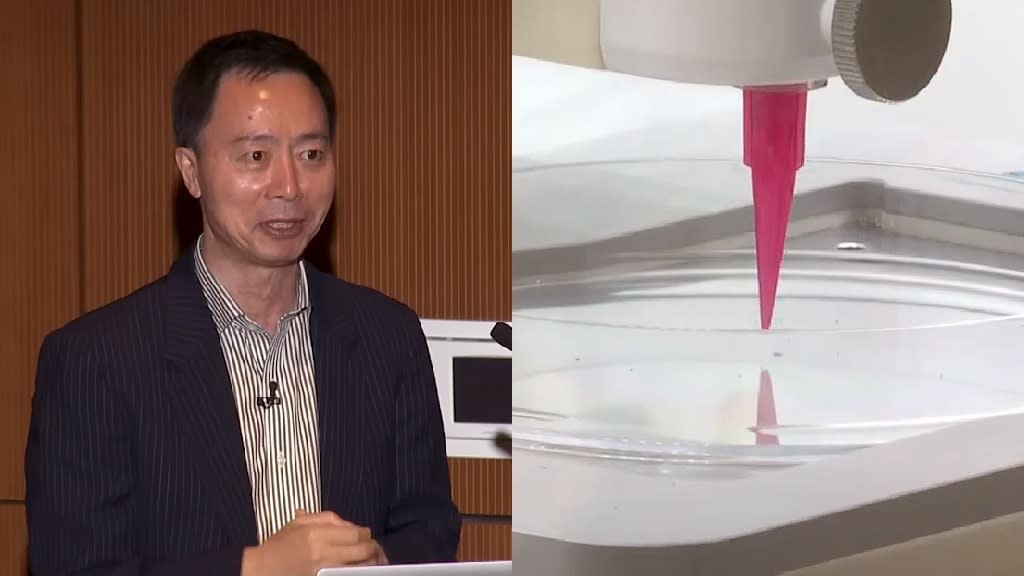Scientists 3D print functional human brain tissue for first time

[Source]
Researchers at the University of Wisconsin–Madison have developed the world's first 3D-printed brain tissue that mimics the growth and behavior of the real human brain.
Neuroscience breakthrough: Led by Professor Su-Chun Zhang, the scientists managed to print functional human brain tissue using a novel technique that creates an environment where neurons can thrive, according to a press release. The result is a 3D-printed tissue model that replicates the communication and intricate network formations found in the human brain.
How they did it: Described in the journal Cell Stem Cell, the researchers used a specialized 3D-printing technique that employs a horizontal layering approach and utilizes a softer "bio-ink" gel.
This innovative approach allowed neurons to grow into each other and establish connections reminiscent of human brain structures. Unlike traditional 3D-printing methods that stack layers vertically, this horizontal approach enables precise control over the types and arrangements of cells, facilitating the formation of intricate neural networks within the printed tissue.
Trending on NextShark: Indian painter gets brain-dead woman's hands in rare bilateral hand transplant
Promising results: The researchers printed various brain regions, including the cerebral cortex and the striatum, and observed remarkable interactions between different types of neurons.
"Even when we printed different cells belonging to different parts of the brain, they were still able to communicate with each other in a very special and specific way," Zhang explained.
Why it matters: This research poses significant implications for the study of neurological and neurodevelopmental disorders like Alzheimer's and Parkinson's. The model offers unprecedented control over cell types and arrangements, allowing scientists to investigate specific brain functions with precision previously out of reach.
Trending on NextShark: Asian family donates $5 million to Black students in honor of family who helped them
"This could be a hugely powerful model to help us understand how brain cells and parts of the brain communicate in humans," says Zhang.
What’s next: The researchers now aim to further enhance their bio-ink and refine their printing equipment to enable the creation of specific orientations of cells within the printed tissue. They aim to one day pave the way for transformative advancements in the diagnosis, treatment and prevention of neurological disorders. The 3D-printed brain tissue already provides a more accurate and customizable platform for drug testing, studying brain development and deciphering complex diseases. The technology is also widely accessible to other labs, promising a surge of new research in neuroscience.
The study was supported by various funding sources, including NIH-NINDS, NICHD, the National Medical Research Council of Singapore and the Ministry of Education of Singapore, among others.
Trending on NextShark: $1.5M lawsuit accuses California DA of racism against Asian Americans
Download the NextShark App:
Want to keep up to date on Asian American News? Download the NextShark App today!

 Yahoo News
Yahoo News 
